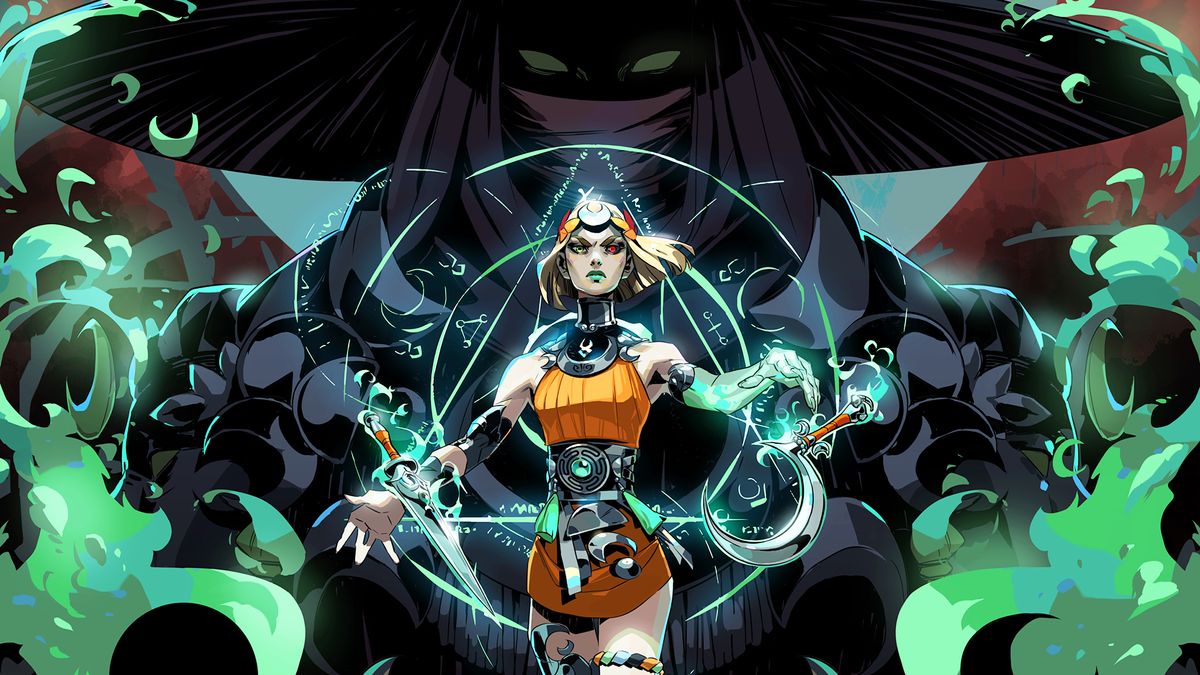Surprise! Hades 2 is finally here and playable. Supergiant’s hack-and-slash, flirt-with-gods roguelike is a brief technical test away from its Steam early access debut. I’ve slashed my way through its opening area and first boss and now I need more. Even though it’s clearly in an unfinished state, it’s good. Like, really good.
A small part of me was a little hesitant to see Supergiant do its first direct sequel. Every game since 2011’s Bastion has taken us to completely different worlds with new approaches to combat. I wasn’t even a huge fan of Pyre, but I respect any game that is brave enough to mix strategic action with sports game elements à la NBA Jam. Bastion was my favorite until Hades grabbed that torch and brought it into the realm of a roguelike action game wrapped in a story about a family of Greek gods and goddesses.
After playing a few hours of Hades 2, that small part of me has been proven wrong. The world absolutely needed another Hades, and Supergiant is already pushing the first game’s satisfying loop even further than before.
Zagreus and the rest of his family are gone. In Hades 2, you play as Melinoë, his staunch young sister, as she descends into the underworld hunting for Chronos, the Titan of Time. Melinoë is just as pissed off as Zagreus—you can press a button to brood after every run—but has a much stronger command over combat from the start.
Although her basic movement mirrors Zagreus’ (plus the ability to sprint), her attacks can be modified for different effects using a new magick resource. With the Witch’s Staff equipped, you can hold the button for a special attack to transform it from a bolt of energy into a big bubble that explodes on impact. The risk, of course, is the time it takes to charge it up. Her cast ability normally drops a circle on the floor that roots enemies in place, but holding it down causes it to also deal a chunk of damage as it expires.
My action RPG build-obsessed brain has already started to connect the dots.
You can’t play Melinoë exactly like Zagreus because the creatures you face are nastier than the ones I remember in Hades’ first area. Stages fill up with ghosts spewing projectiles and launching fists at you quickly and the only way to manage it all is to prioritize the most dangerous ones. It’s easy enough to dart between them in the early sections using her dodge (which leaves a streak of stars that retracts to visually communicate its short cooldown), but once the enemies get armor on top of their health, you have to carefully look for openings in their barrage of attacks.
Boons are back and can modify each layer of Melinoë’s abilities just as they did for Zagreus. Poseidon—who still has extreme uncle energy, don’t worry—turned my sprint into a tidal wave that crushed enemies as I ran into them for a small magick cost. I wasn’t able to pick up Apollo’s boon that restores magick while you stand in your ensnaring circle in the same run, but my build-obsessed brain has already started to connect the dots. My splashy sprint still synergized with a second boon that made my circle move with me, locking enemies in my path.
Just like the original game, you’re going to die a lot. But don’t worry, that’s your ticket into the other half of the Hades experience: the chance to speak to more unbelievably hot gods and maybe even romance them. Each death sends you into The Crossroads, an outdoor hub with characters who will help you unpack what happened in the time between Hades 2 and the original Hades.
Hecate, who, by the way, is voiced by Baldur’s Gate 3’s Amelia Tyler, has already claimed first place for best new character for me. She’s a tall mean witch with a set of chiseled abs out there on full display. After one of my runs, I got a peek under her shell during a flashback sequence where she teases a young Melinoë as they play hide-and-seek. That Hecate seems to be gone and replaced with a mentor figure who needs to see her apprentice succeed where she failed. Which is why, I imagine, she steps in as the game’s first boss to make sure you’re ready for what lies ahead. Surely placing massive expectations on your adopted child won’t have any consequences down the line. Surely.
Also in The Crossroads is a big cauldron for brewing up incantations using materials you find on each run. There are flowers to pick and metals to mine that are used to unlock new weapons, equip passive bonuses for each run, and invite new NPCs to The Crossroads. I made myself a pickaxe for mining, started a little garden for growing plant materials, and revealed an arcana card that healed me every time I entered a new stage. Even though you’re supposed to be after Chronos, you’re encouraged to spend a few runs gathering materials for upgrades that will make your life a little easier. Oh and God Mode is back if you’d prefer to gain damage resistance after each death to focus on seeing the story.
It’s all here. Supergiant has honed its ability to quickly hook you into its story and dangle exciting reasons to jump back into a run as it did in the first Hades. It’s going to make it extremely hard to wait out its early access period.
I felt the intense pull to do it all again just to see what other kinds of powers I could combine.
I knew Hades 2 had me firmly in its grip when I swapped to Melinoë’s dual-wielded blades over the staff. Going from long-range jabs to quick swipes and a special held-down attack that teleports you behind enemies was like playing a new class in an RPG—just like the original game’s arsenal of weapons. Hestia’s boon infused them with flame and suddenly every enemy I hit would melt from powerful ticks of damage while I was on the other side of the screen. That run didn’t go particularly well, but I felt the intense pull to do it all again just to see what other kinds of powers I could combine. In other words: it’s over for me.
You can sign up for Hades 2’s technical test on its Steam page right now, and Supergiant says its early access launch is very soon.





/static.texastribune.org/media/files/f5fdb1dff4d6fd788cba66ebaefe08d0/Paxton_GOP_Convention_2018_BD_TT.jpg)




